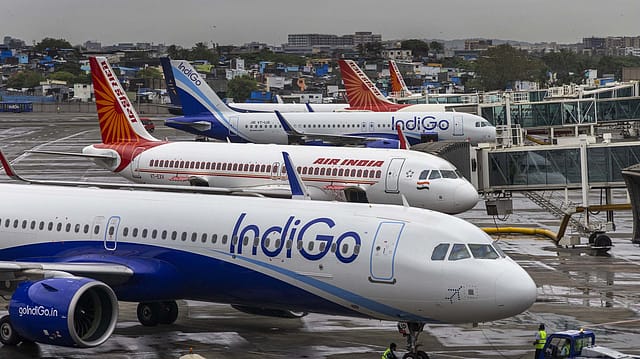Air traffic set to regain pre-pandemic level this fiscal: CRISIL
ADVERTISEMENT

The air traffic volumes are expected to recover to the pre-pandemic level this fiscal year, spurred by a recovery in revenue and an increase in air tariffs, according to a report by rating agency CRISIL.
In the fiscal year 2022, the air traffic volumes witnessed a partial recovery of 55%, despite being hit owing to tough travel restrictions during the Covid-19 pandemic years of 2020 and 2021. The air traffic volume is expected to increase to the pre-pandemic level of approximately 340 million passengers this fiscal. Between 2015 and 2020, air traffic witnessed an annual growth rate (AGR) of approximately 20%.
The air traffic volume was up 88% in the first five months of this fiscal till August, compared to the corresponding fiscal 2020 level. It is expected to pick up its pace in the remaining months of this fiscal owing to an improvement in travel business sentiment, and travel demand across international routes.
“This fiscal, traffic volume is expected to recover to the pre-pandemic level, implying a robust growth of ~75% over the fiscal 2022 level. The pick-up is expected to be led by domestic traffic as slots and routes on the international front are still opening up,” says Manish Gupta, senior director, CRISIL Ratings.
January 2026
Netflix, which has been in India for a decade, has successfully struck a balance between high-class premium content and pricing that attracts a range of customers. Find out how the U.S. streaming giant evolved in India, plus an exclusive interview with CEO Ted Sarandos. Also read about the Best Investments for 2026, and how rising growth and easing inflation will come in handy for finance minister Nirmala Sitharaman as she prepares Budget 2026.
“In the first five months of this fiscal, domestic traffic stood at 92% of the corresponding fiscal 2020 mark, while international traffic was at 75%. This cements our confidence for healthy volume growth in the current fiscal and a return to near-double-digit growth next fiscal,” he adds.
Meanwhile, the aeronautical tariffs in the country’s four private airports witnessed an increase of 30% so far. According to the report, this will help aeronautical revenue to reach 120% in the fiscal year 2023. Meanwhile, the non-aeronautical revenue has recovered 90% compared to the fiscal year 2020. The revenue of these private airports is expected to rise by 105% and 104% in fiscal 2023 and 2024, respectively.
Ankit Hakhu, director, CRISIL Ratings says, “We expect the debt-service cushions to be maintained close to long-term averages of around 1.4 times (similar to pre-pandemic levels) and thus do not see any material impact on the credit quality of these operators.”
“ Additionally, the airports benefit from a long remaining concession life (of over 35 years) compared with debt tenure (of around 10-18 years), which enables them to refinance debt and manage debt obligations,” he adds.
The development comes at a time when the domestic aviation industry has expanded its capacity with the introduction of the new airline such as Akasa Air and the revival of the beleaguered airline Jet Airways.
Jyotiraditya Scindia, union minister for civil aviation had earlier said that domestic aviation is expected to have as many as 40 crore air travellers across national and international routes by 2027.
